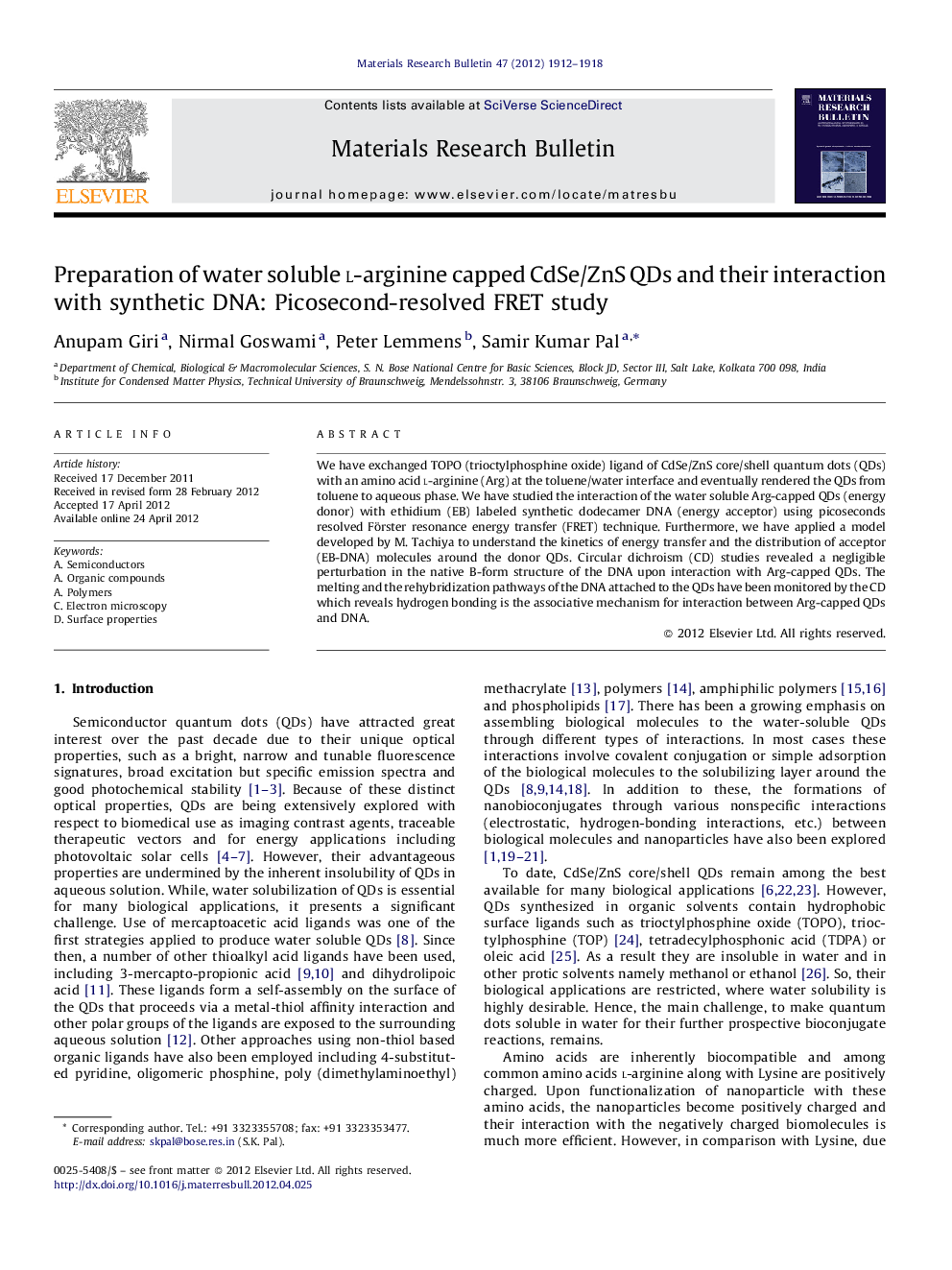| Article ID | Journal | Published Year | Pages | File Type |
|---|---|---|---|---|
| 1489962 | Materials Research Bulletin | 2012 | 7 Pages |
We have exchanged TOPO (trioctylphosphine oxide) ligand of CdSe/ZnS core/shell quantum dots (QDs) with an amino acid l-arginine (Arg) at the toluene/water interface and eventually rendered the QDs from toluene to aqueous phase. We have studied the interaction of the water soluble Arg-capped QDs (energy donor) with ethidium (EB) labeled synthetic dodecamer DNA (energy acceptor) using picoseconds resolved Förster resonance energy transfer (FRET) technique. Furthermore, we have applied a model developed by M. Tachiya to understand the kinetics of energy transfer and the distribution of acceptor (EB-DNA) molecules around the donor QDs. Circular dichroism (CD) studies revealed a negligible perturbation in the native B-form structure of the DNA upon interaction with Arg-capped QDs. The melting and the rehybridization pathways of the DNA attached to the QDs have been monitored by the CD which reveals hydrogen bonding is the associative mechanism for interaction between Arg-capped QDs and DNA.
Graphical abstractFörster resonance energy transfer (FRET) studies on the interaction of water soluble arginine-capped CdSe/ZnS QDs with ethidium bromide (EB) labeled synthetic dodecamer DNA.Figure optionsDownload full-size imageDownload as PowerPoint slideHighlights► We have solubilized CdSe/ZnS QD in water replacing their TOPO ligand by l-arginine. ► We have studied arginine@QD–DNA interaction using FRET technique. ► Arginine@QDs act as energy donor and ethidium bromide-DNA acts as energy acceptor. ► We have applied a kinetic model to understand the kinetics of energy transfer. ► Circular dichroism studies revealed negligible perturbation in the DNA B-form in the arg@QD-DNA complex.
